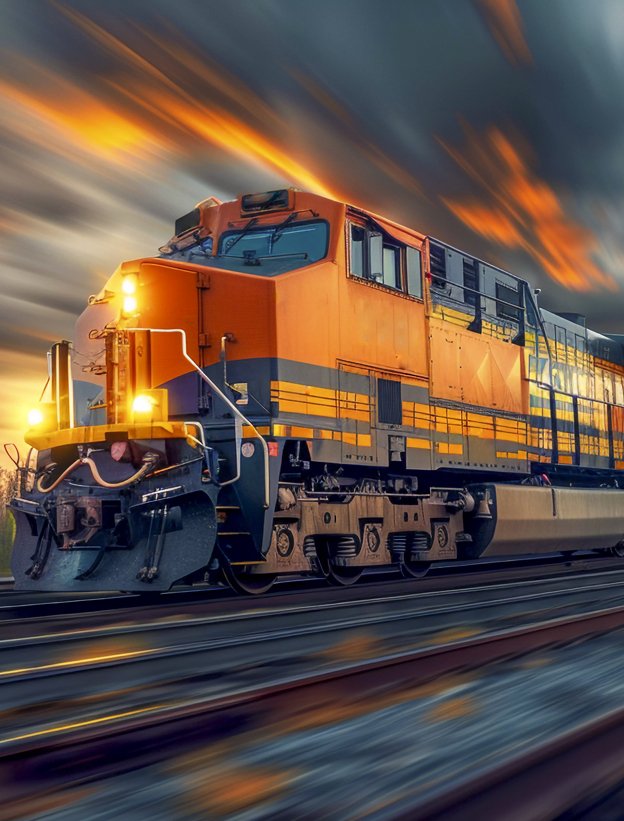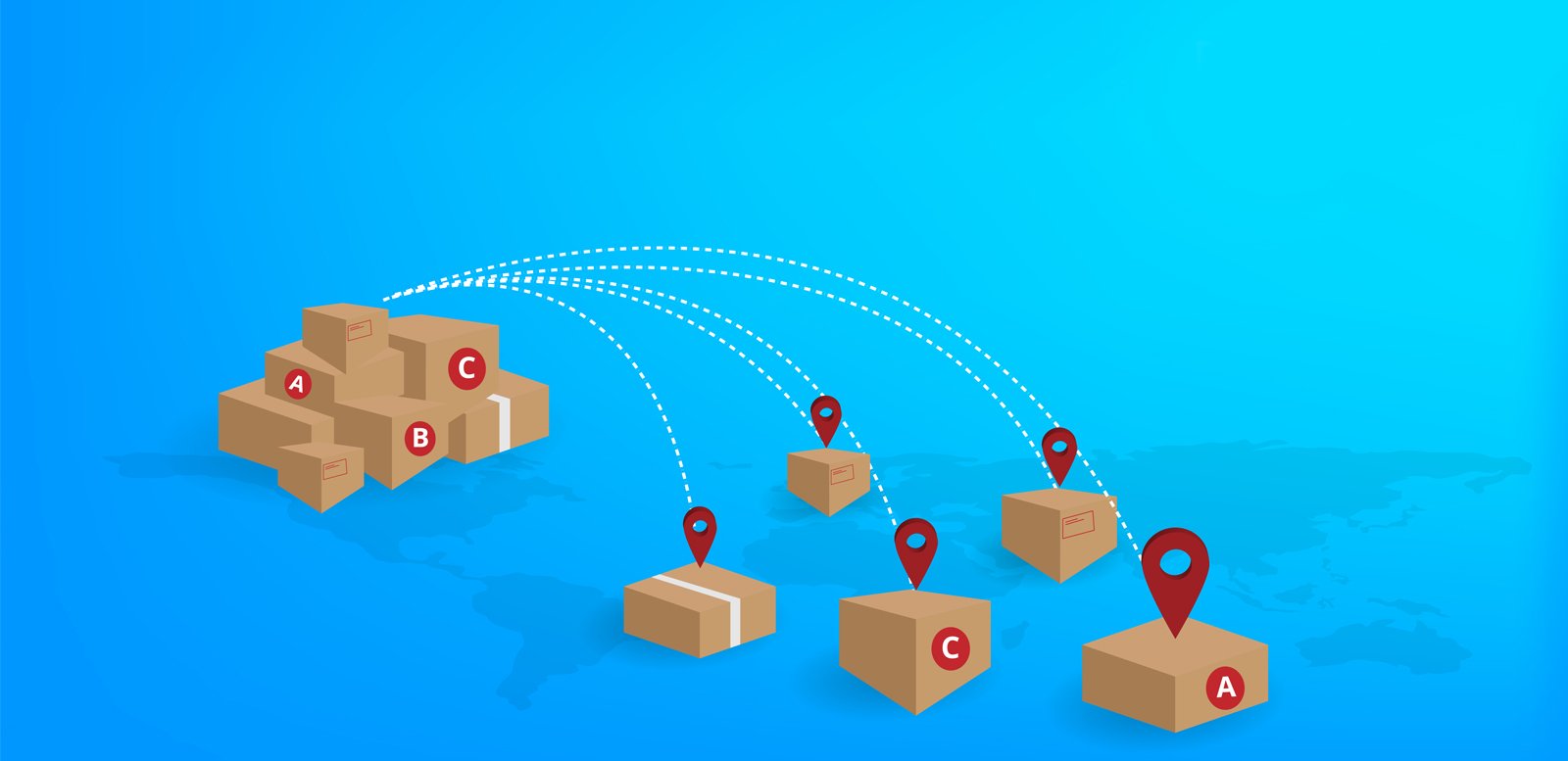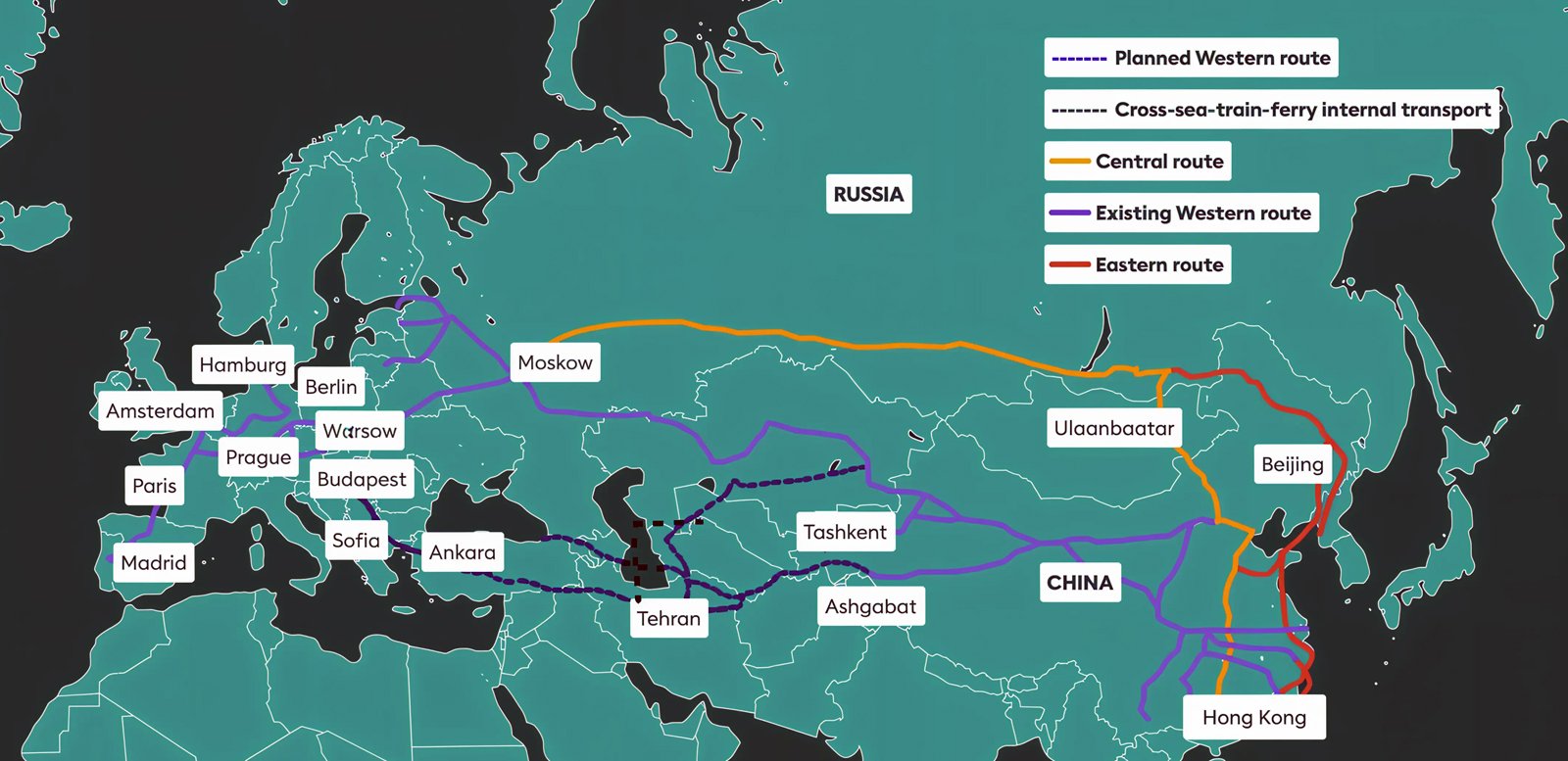Rail freight
Rail Freight from China offers a fast, cost-effective shipping solution to Europe and Russia. DDPCH ensures reliable delivery with competitive rates and expert logistics.
- 4.9 ( 2k+ User Reviews)


Why use Rail Freight Service from China?
Did you when our customers feel like road, sea, and air aren’t their best options, they turn to rail freight? Yes, you read it right because it’s the perfect balance. Rail freight shipping is faster than sea, cheaper than air, and more reliable for long-distance transport from any city in China.
At DDPCH, we make rail freight simple with smooth booking, reliable tracking, and end-to-end support. If you are looking for an alternative that works, rail freight might be your best choice.
By the end of this article, you will learn about these things:
- How rail freight service saves time and money when shipping from China
- Key routes from China to major destinations worldwide
- How DDPCH can simplify your rail shipping needs from China
So, keep reading to discover why rail freight is a smart choice for your next shipment from China!
Shipping by rail from China is a smart choice when you need faster delivery than sea freight but can't justify the high cost of air. Trains from China to Europe typically take 15–20 days—cutting transit time in half compared to sea routes while keeping your logistics budget in check.
Expert Tips

CONTACT US 24/7
You can contact our sales experts via WhatsApp anytime to get the best shipping rates, or fill out the cost inquiry form, and we will reach out to you.
Table of Contents

Rail Freight Shipping Cost from China
Did you know that rail freight shipping is cheaper than air freight and faster than sea shipping, making it a great middle option? Yes, you read it right. That's why many of our customers choose this shipping solution when they need to stick within their budget.
Please note that shipping cost by rail from China depends on a few key things like how far your goods are traveling, how heavy they are, and what kind of container you use. The shipping rates can also change based on fuel costs, customs fees, and the time of year.
Check the table below for a simple guide to understanding rail freight shipping cost from China to Asia and Europe.
| Origin in China | Rail Freight Cost from China to Asian Countries (USD - Full Container Load) | Rail Freight Cost from China to European Countries (USD - Full Container Load) |
|---|---|---|
| Xi’an (西安) | $3,500 per full container | $5,550 per full container |
| Yiwu (义乌) | $3,890 per full container | $5,785 per full container |
| Wuhan (武汉) | $4,350 per full container | $7,060 per full container |
| Chengdu (成都) | $4,200 per full container | $6,450 per full container |
| Shenzhen (深圳) | $4,500 per full container | $7,200 per full container |
Rail freight rates from China are relatively stable throughout the year compared to sea and air, which often fluctuate due to fuel costs, port congestion, or seasonal demand. This stability helps businesses plan their logistics budgets more accurately.
Expert Tips

Rail Freight Shipping Time from China
Based on our experience, rail freight shipping time from China depends on a few key factors. The distance and route play a big role, which means longer routes take more time. Customs clearance at borders can also cause delays if paperwork isn’t ready.
Check our table to see the rail freight transit time for your route so you’ll know when to expect your shipment.
| Region | Origin City in China (中文名) | Destination Country | Estimated Transit Time (Days) |
|---|---|---|---|
| Europe | Chongqing (重庆) | Germany | 15-17 |
| Europe | Yiwu (义乌) | Spain | 15-20 |
| Europe | Wuhan (武汉) | France | 15-20 |
| Europe | Chengdu (成都) | Italy | 15-19 |
| Europe | Zhengzhou (郑州) | Netherlands | 15-25 |
| Europe | Suzhou (苏州) | Czech Republic | 18-25 |
| Europe | Xi'an (西安) | Poland | 14-20 |
| Europe | Shenzhen (深圳) | United Kingdom | 18-20 |
| Europe | Lianyungang (连云港) | Belgium | 14-23 |
| Europe | Nanjing (南京) | Russia | 15-20 |
Routes from key hubs like Yiwu, Chongqing, Chengdu, and Zhengzhou to cities like Duisburg, Hamburg, or Warsaw are among the most efficient, with frequent weekly departures and reliable transit times.
Expert Tips

How to track your shipment by rail freight from China?
Did you know that tracking your rail freight shipment from China is easier than you think? Knowing where your cargo is at every stage helps you plan better, avoid delays, and stay updated on delivery times.
In this guide, you will learn how to track your shipment using the Bill of Lading (B/L) number, which rail carriers provide for real-time updates. With DDPCH, you stay informed and in control of your cargo every step of the way:
1. China COSCO Shipping Corporation (COSCO)
🔗 Tracking Website: COSCO Tracking
🔢 Booking Reference Format: COSU followed by 9 digits (e.g., COSU123456789)
2. Maersk Line
🔗 Tracking Website: Maersk Tracking
🔢 Booking Reference Format: MAEU followed by 9 digits (e.g., MAEU123456789)
3. Ocean Network Express (ONE)
🔗 Tracking Website: ONE Cargo Tracking
🔢 Booking Reference Format: ONEY followed by 9 digits (e.g., ONEY123456789)
4. CMA CGM
🔗 Tracking Website: CMA CGM Tracking
🔢 Booking Reference Format: CMDU followed by 9 digits (e.g., CMDU123456789)
5. Hapag-Lloyd
🔗 Tracking Website: Hapag-Lloyd Tracking
🔢 Booking Reference Format: HLCU followed by 9 digits (e.g., HLCU123456789)
6. China Railway Express (CR Express)
🔗 Tracking Website: CR Express Tracking
🔢 Booking Reference Format: A mix of letters and numbers (Varies by shipment)
7. DB Cargo Eurasia
🔗 Tracking Website: DB Cargo Tracking
🔢 Booking Reference Format: Unique numerical series (Specific to each shipment)

Main Documents for Rail Freight from China
When shipping by rail from China, having the right documents is key to avoiding delays and ensuring smooth delivery. These documents help with customs clearance, tracking, and verifying shipment details. Missing or incorrect paperwork can lead to extra costs and longer transit times.
Check the table below for your guide on the main documents needed by DDPCH sales team for rail freight.
| Required Document | Purpose in Rail Freight Shipping | Provided By |
|---|---|---|
| Commercial Invoice | Specifies the value, description, and details of your shipment for customs clearance. | Supplier |
| Packing List | Includes product names, weights, and packaging details for proper handling and customs documentation. | Supplier |
| Railway Bill of Lading (B/L) | Acts as the official contract of carriage and serves as proof of shipment. | Freight Forwarder (DDPCH) |
| Certificate of Origin (COO) | Confirms the manufacturing country of the shipped goods for tariff and regulatory compliance. | Supplier |
| Material Safety Data Sheet (MSDS) or DGM Report | Required for hazardous goods, providing safety and handling guidelines. | Supplier |
| Loading Station | Specifies the departure rail terminal where goods are loaded onto the train. | Supplier |
| Receiving Station | Indicates the final rail terminal where goods will be unloaded upon arrival. | Customer (You) |
| Collection Address in China | Defines the pickup location of goods before transportation begins. | Supplier |
| Recipient Information | Contains the contact details of the consignee (person or company receiving the goods). | Customer (You) |
| Photo of Product & Packaging | Serves as proof of the product’s condition and packaging before shipping. | Supplier |
Insurance documents are recommended if you want to protect your cargo against damage or loss during the journey. It provides peace of mind for high-value shipments.
Expert Tips

Step by Step Process for Rail Freight
One of the first things our customers ask when inquiring about rail freight from China is, “How does it work?” Well, it is actually pretty simple, especially when you have an experienced freight forwarder like DDPCH handling it for you. To make things easy for you, here’s a quick breakdown of how we simplify the process from China.
Step 1: Get a Price Quote from DDPCH
Request a shipping quote by providing details about your cargo, destination, and shipping requirements. Be sure to include your packing list and proforma invoice for an accurate estimate.
Step 2: Secure Your Booking with DDPCH
Confirm the shipping cost and finalize your rail freight booking with DDPCH to ensure a smooth transportation process.
Step 3: Coordinate Shipping Details with the Supplier
DDPCH will communicate with your supplier to confirm shipment details and provide you with the shipping marks and warehouse address.
Step 4: Make Payment to DDPCH
Once your cargo arrives and is checked at our warehouse, DDPCH will send you the final invoice and coordinate the payment process.
Step 5: Complete Export Customs Procedures
DDPCH takes care of export clearance to ensure your shipment leaves China legally and without delays.
Step 6: Cargo Moves in Transit to Your Country
Your shipment is now on its way via rail freight from China to its destination.
Step 7: Handle Import Customs Clearance
Upon arrival, DDPCH will manage the import customs procedures to ensure your goods are processed efficiently.
Step 8: Schedule Final Delivery
Once your shipment is cleared, DDPCH arranges the final delivery to your location.
Always confirm your rail booking at least one week in advance to secure container space, rail departures are regular, but capacity fills fast during peak seasons.
Expert Tips

Rail Freight Routes from China
Knowing the rail freight routes from China can help you save both time and money when shipping goods. Rail freight is a faster and more cost-effective option compared to sea shipping, especially for inland destinations.
By understanding the main routes, you can choose the best path for your shipment, avoid delays, and reduce unnecessary costs.
| Origin City in China (中文名) | Destination Country | Rail Freight Route Name | Key Route Stops |
|---|---|---|---|
| Chongqing (重庆) | Germany | Chongqing–Xinjiang–Europe Railway (Yuxinou Railway) | Chongqing - Chengdu - Xi'an - Lanzhou - Ürümqi - Alashankou (China) - Dostyk (Kazakhstan) - Aktobe - Samara (Russia) - Moscow - Minsk (Belarus) - Warsaw (Poland) - Duisburg (Germany) |
| Yiwu (义乌) | Spain | Yiwu–Madrid Railway Line | Yiwu - Zhengzhou - Xi'an - Ürümqi - Alashankou (China) - Dostyk (Kazakhstan) - Moscow (Russia) - Minsk (Belarus) - Warsaw (Poland) - Hamburg (Germany) - Madrid (Spain) |
| Wuhan (武汉) | France | Wuhan–Lyon Railway Line | Wuhan - Zhengzhou - Xi'an - Ürümqi - Alashankou (China) - Dostyk (Kazakhstan) - Moscow (Russia) - Minsk (Belarus) - Warsaw (Poland) - Duisburg (Germany) - Lyon (France) |
| Chengdu (成都) | Italy | Chengdu–Milan Railway Line | Chengdu - Xi'an - Lanzhou - Ürümqi - Alashankou (China) - Dostyk (Kazakhstan) - Moscow (Russia) - Minsk (Belarus) - Warsaw (Poland) - Duisburg (Germany) - Milan (Italy) |
| Zhengzhou (郑州) | Netherlands | Zhengzhou–Rotterdam Railway Line | Zhengzhou - Xi'an - Lanzhou - Ürümqi - Alashankou (China) - Dostyk (Kazakhstan) - Moscow (Russia) - Minsk (Belarus) - Warsaw (Poland) - Duisburg (Germany) - Rotterdam (Netherlands) |
| Suzhou (苏州) | Czech Republic | Suzhou–Prague Railway Line | Suzhou - Zhengzhou - Xi'an - Ürümqi - Alashankou (China) - Dostyk (Kazakhstan) - Moscow (Russia) - Minsk (Belarus) - Warsaw (Poland) - Prague (Czech Republic) |
| Shenzhen (深圳) | Turkey | Shenzhen–Istanbul Railway Line | Shenzhen - Guangzhou - Changsha - Zhengzhou - Xi'an - Ürümqi - Alashankou (China) - Dostyk (Kazakhstan) - Moscow (Russia) - Minsk (Belarus) - Warsaw (Poland) - Sofia (Bulgaria) - Istanbul (Turkey) |
| Lianyungang (连云港) | Kazakhstan | New Eurasian Land Bridge | Lianyungang - Zhengzhou - Xi'an - Lanzhou - Ürümqi - Alashankou (China) - Dostyk (Kazakhstan) - Aktobe (Kazakhstan) |
| Nanjing (南京) | Russia | Nanjing–Moscow Railway Line | Nanjing - Zhengzhou - Xi'an - Lanzhou - Ürümqi - Alashankou (China) - Dostyk (Kazakhstan) - Moscow (Russia) |
| Kunming (昆明) | Laos | China–Laos Railway | Kunming - Yuxi - Pu’er - Xishuangbanna - Boten (China-Laos Border) - Luang Prabang - Vang Vieng - Vientiane (Laos) |

Top 20 Destinations that Accept Rail Freight from China
If you are shipping from China, you might be wondering if rail freight is an option for your country, right? Well, we’ve got you covered! In this part, we have listed the top 20 destinations that commonly receive rail shipments from China, places where many of our customers already use rail freight service. Check if your country made the list.
| Destination Country | Major Cities Receiving Rail Freight from China |
|---|---|
| Germany | Duisburg, Hamburg, Munich, Frankfurt, Leipzig |
| Russia | Moscow, Yekaterinburg, Vladivostok, Novosibirsk, St. Petersburg |
| Poland | Warsaw, Lodz, Poznań, Gdańsk, Wrocław |
| Netherlands | Rotterdam, Amsterdam, Venlo, Eindhoven, Utrecht |
| Belgium | Antwerp, Brussels, Liege, Ghent, Charleroi |
| France | Paris, Lyon, Strasbourg, Marseille, Lille |
| United Kingdom | London, Birmingham, Manchester, Leeds, Glasgow |
| Spain | Madrid, Barcelona, Valencia, Zaragoza, Seville |
| Italy | Milan, Rome, Turin, Bologna, Genoa |
| Czech Republic | Prague, Brno, Ostrava, Plzeň, Hradec Králové |
| Hungary | Budapest, Debrecen, Szeged, Miskolc, Győr |
| Austria | Vienna, Linz, Graz, Salzburg, Innsbruck |
| Slovakia | Bratislava, Košice, Žilina, Prešov, Nitra |
| Sweden | Stockholm, Gothenburg, Malmö, Uppsala, Västerås |
| Finland | Helsinki, Tampere, Oulu, Turku, Jyväskylä |
| Belarus | Minsk, Brest, Gomel, Vitebsk, Mogilev |
| Kazakhstan | Nur-Sultan (Astana), Almaty, Shymkent, Aktobe, Karaganda |
| Turkey | Istanbul, Ankara, Izmir, Bursa, Mersin |
| Switzerland | Zurich, Geneva, Basel, Bern, Lausanne |
| Denmark | Copenhagen, Aarhus, Odense, Aalborg, Esbjerg |
Work with a freight forwarder who has local partners at the destination terminal. This helps speed up unloading, customs clearance, and final delivery to your warehouse.
Expert Tips

Advantages and Disadvantages of Rail Freight
Knowing the advantages and disadvantages of rail freight is important for importers like you who want to make smart shipping decisions. No doubt, rail freight offers a balance between cost, speed, and reliability, making it a popular choice for cargo from China. However, it also has some limitations, like accessibility and flexibility. Here, we have provided a simple guide for you, please check the table below.
When considering rail freight from China, it's essential to weigh its advantages and disadvantages to determine if it's the right shipping method for your business.
✅ Advantages of Rail Freight:
- Lower Shipping Cost: more cost-effective than air freight, especially for large-volume shipments.
- Faster Transit Time: quicker than sea freight, offering a balance between speed and affordability.
- High Service Reliability: trains run on fixed schedules, minimizing delays.
- Large Loading Capacity: ideal for transporting bulk goods, heavy cargo, and industrial shipments.
- Greater Safety: lower risk of accidents and damages compared to road freight.
- Better Accessibility: connects China to landlocked countries and inland regions worldwide.
- Weather Resistance: less impacted by bad weather than sea or road transport.
❌ Disadvantages of Rail Freight:
- Higher Freight Cost than Sea Shipping: while cheaper than air freight, it is more expensive than ocean freight for very bulky shipments.
- Slower than Air Freight: not ideal for urgent or time-sensitive deliveries.
- Limited Accessibility: cannot reach remote areas without railway infrastructure.
- Not Suitable for Perishable Goods: lacks temperature-controlled solutions for fresh or sensitive cargo.
- Higher Risk of Damage: more loading and unloading points increase the chance of loss or damage.
- Less Route Flexibility: trains follow fixed railway routes, making them less adaptable than trucks.

Why use DDPCH for Rail Freight?
Rail freight is the perfect balance between cost and speed, making it cheaper than air freight and much faster than sea shipping. But to get the most out of it, you need a reliable freight forwarder who knows the process inside out. That’s where us, DDPCH shipping company, comes in.
At DDPCH, we specialize in rail freight shipping from China and handle everything from booking to final delivery.
We offer competitive rates, ensuring you get the best price for your cargo without compromising on service quality. So, contact DDPCH today and let us handle your rail freight needs efficiently.
Any questions find here
You can ask us any questions about shipping from China!
How much does rail freight shipping from China cost?
Rail freight shipping rates from China depend on distance, cargo weight, and container type. Prices typically range from 3,500 to 7,200 USD per full container. Seasonal demand and fuel costs can also impact pricing.
How long does rail freight shipping take from China to Europe and Asia?
Transit times vary based on the route and customs processing. Shipments to Europe take 15-25 days, while Asian destinations can take as little as 10 hours (Laos) or up to 30 days (Turkey).
What are the main rail freight routes from China?
Popular routes include Yiwu–Madrid Railway, Chongqing–Germany (Yuxinou Railway), and Wuhan–Lyon Railway, connecting major trade hubs across Asia and Europe.
How do I track my rail freight shipment from China?
You can track shipments via major rail carriers like CR Express, DB Cargo Eurasia, COSCO, and Maersk using their online tracking portals with your booking reference number.
What documents do I need for rail freight shipping from China?
Essential documents include a commercial invoice, packing list, railway bill of lading, certificate of origin, and any required safety documents for hazardous goods.
What are the advantages of rail freight compared to air and sea shipping?
Rail freight is cheaper than air freight and faster than sea freight, making it a cost-effective and reliable option for bulk shipments.
Which countries and cities accept rail freight from China?
Key destinations include Germany (Duisburg, Hamburg), Russia (Moscow, St. Petersburg), Spain (Madrid, Barcelona), and Turkey (Istanbul, Ankara), among others.
Ship from China now!
Contact us today & get the best shipping rate from China! 📦🚀



